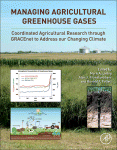

Most ebook files are in PDF format, so you can easily read them using various software such as Foxit Reader or directly on the Google Chrome browser.
Some ebook files are released by publishers in other formats such as .awz, .mobi, .epub, .fb2, etc. You may need to install specific software to read these formats on mobile/PC, such as Calibre.
Please read the tutorial at this link: https://ebookbell.com/faq
We offer FREE conversion to the popular formats you request; however, this may take some time. Therefore, right after payment, please email us, and we will try to provide the service as quickly as possible.
For some exceptional file formats or broken links (if any), please refrain from opening any disputes. Instead, email us first, and we will try to assist within a maximum of 6 hours.
EbookBell Team

0.0
0 reviews ''For researchers, industry professionals, and regulators, Liebig et al., who are associated with the US Department of Agriculture-Agricultural Research Service (USDA-ARS), synthesize research findings from about 30 ARS locations participating in the GRACEnet (Greenhouse gas Reduction through Agricultural Carbon Enhancement network) project. Contributed by USDA and other agricultural researchers mostly from the US, the 29 chapters describe the evaluation of agricultural carbon sequestration and greenhouse gas management, measurement, and modeling; economic and policy considerations for the short-term future; and long-term opportunities and the need for research collaborations. They discuss current trends in greenhouse gas emissions, agricultural contributions to those emissions, and risks associated with global climate change; background on the GRACEnet initiative; soil organic carbon dynamics for prevalent agroecosystmes in the US (cropland, rangeland, pasture, and biofeedstock production systems); the responses of carbon dioxide, methane, and nitrous oxide fluxes to management; five common ecosystem models for estimating SOC dynamics and greenhouse gas flux; key attributes of analytical methods used to estimate carbon change in soil and greenhouse gas flux; economic outcomes, incentive programs, and policy scenarios associated with reducing greenhouse gas emissions; and networks worldwide involved in climate change-related research.''-- Reference & Research Book News October 2012